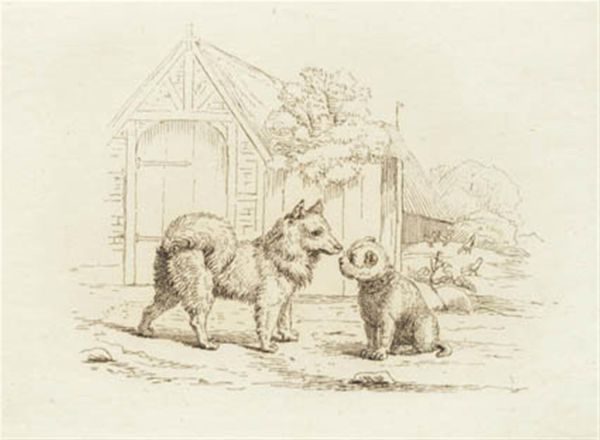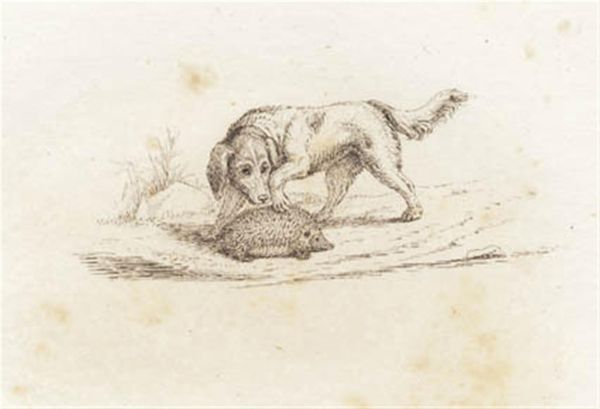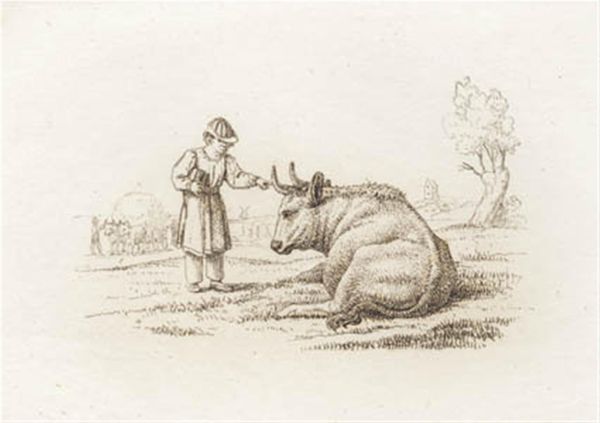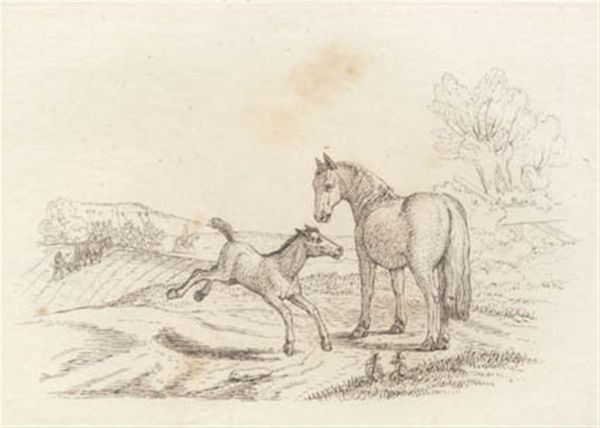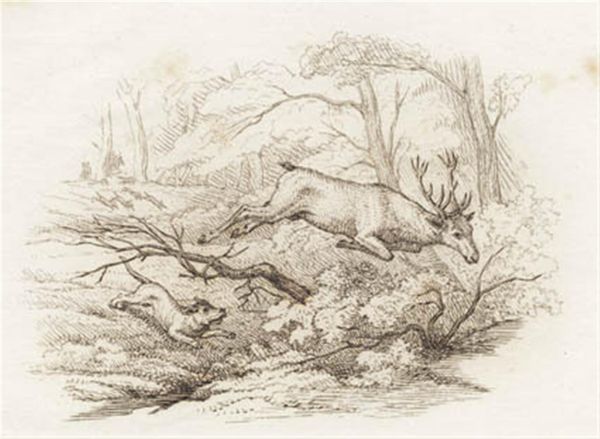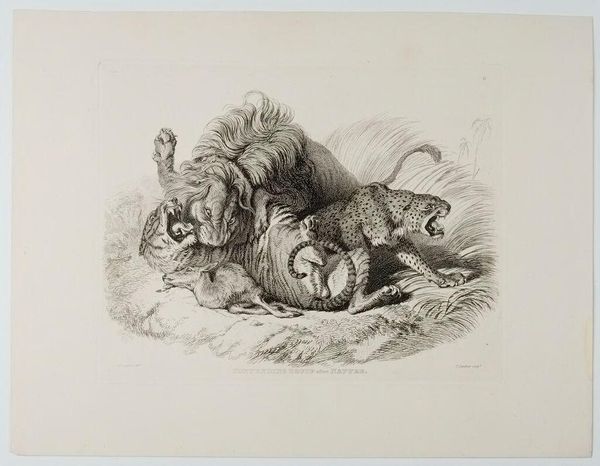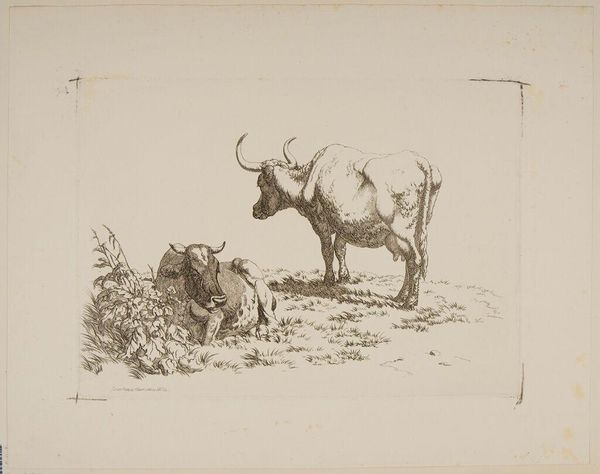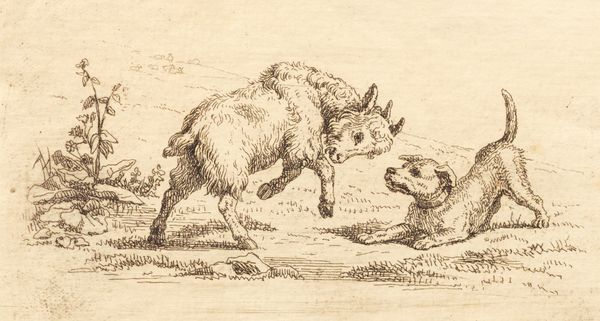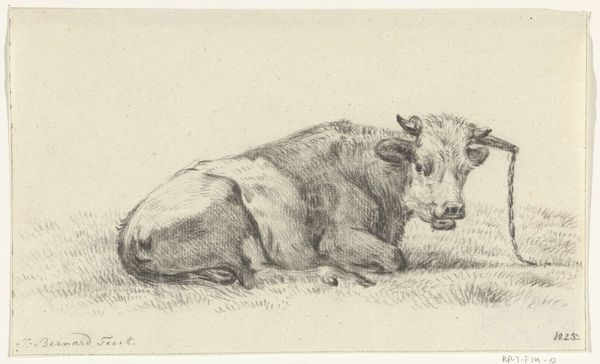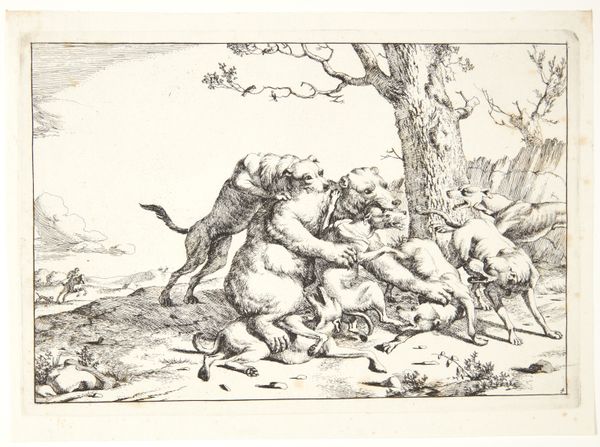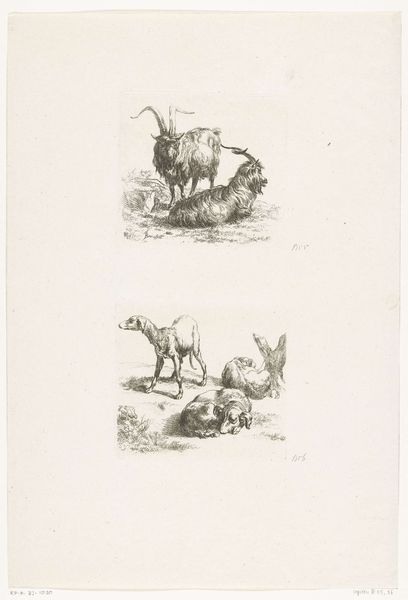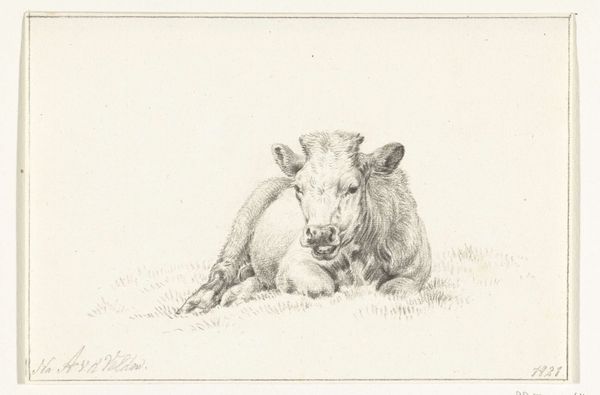
Illustration til "Halvhundrede Fabler for Børn" af Hey 1834
0:00
0:00
drawing, print, engraving
#
drawing
# print
#
landscape
#
line
#
genre-painting
#
engraving
Dimensions: 144 mm (height) x 257 mm (width) (bladmaal)
Curator: Well, well, doesn't this evoke a rustic charm? Editor: Indeed. The illustration before us, created by Martinus Rørbye in 1834, bears the lengthy title "Illustration til 'Halvhundrede Fabler for Børn' af Hey," or, in simpler terms, "Illustration for 'Fifty Fables for Children' by Hey." Curator: The composition immediately grabs you. A lively goat locked in a playful standoff with a dog. You can almost hear the excited barks. Given the historical context of this museum and collection, is there any further story to unpack here? Editor: Precisely! The magic lies within its creation, through drawing and then engraving to arrive to print, transforming it into reproducible material. It shows a keen understanding of the possibilities of art in society. It speaks to Rørbye's ability to disseminate visual stories. We need not neglect how images are crucial to a broader consumption of cultural texts. Curator: And notice the quality of line here, defining form. It's delicate, yet descriptive. It makes me think of the artisanry and craftsmanship that underlies art—often ignored in narratives that lionize unique or standalone artwork. There is nothing like appreciating the artist at work. Editor: I couldn't agree more about its craftsmanship. Furthermore, in Denmark at this time, Romantic nationalism surged. Art like this could have provided moral guidance or a form of familiar connection. The very materiality is entwined with production, distribution, and ultimately, education and perhaps leisure in households across Denmark. It underscores art’s public life, more than the pure skill in its making. Curator: True, the choice of imagery is quite clever in appealing to all. What lessons would we hope to impart? Could such depictions of domestic interaction become aspirational across Denmark's burgeoning middle class? How interesting that these prints had very tangible utility! It prompts one to meditate on the social lives and labour which shape an aesthetic experience. Editor: Absolutely. From this discussion, let's keep our focus sharp as we appreciate its socio-historical value in print and illustration. Curator: It’s quite remarkable. It seems that the world can be encapsulated in a singular, material, artifact.
Comments
No comments
Be the first to comment and join the conversation on the ultimate creative platform.
